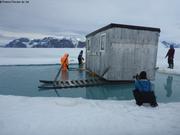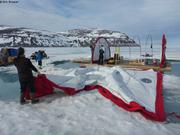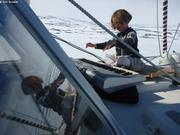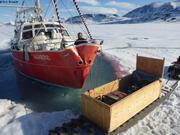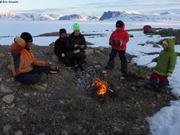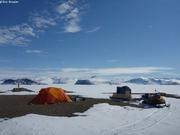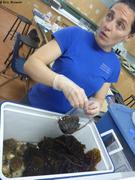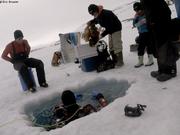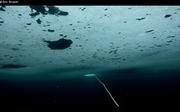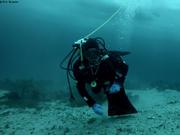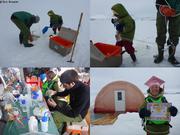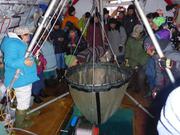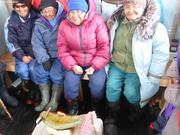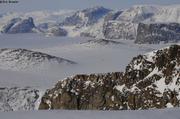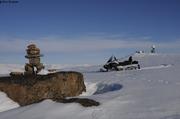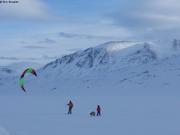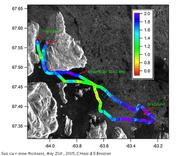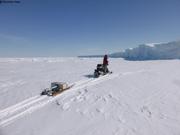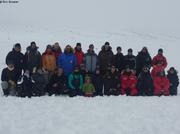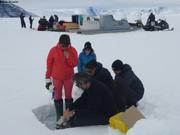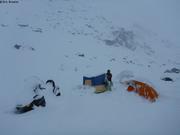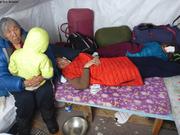Elders finally came to the ice camp; indeed, for two weeks it was never the
good day, bad weather or other priorities... it was becoming urgent before
most of them would go to their summer camps.
With curiosity, quite a bit of good mood and kindness, about 15 people aged
over 60 years followed us into our flooded tent. Magic atmosphere inside in
the darkness, popping turquoise light from the sampling hole, sparkling red
reflections from the red bottom of the tent, with about 5 cm of water flooding
the floor. Every pair of eyes followed the messenger closing the Niskin
bottle, inspected the strange instruments standing by on top of boxes, a
filtration ramp here, a large plankton net there... This net also showed us
some nice iridescent blue plankton. Then outside, playful atmosphere around
the ice core, handmade, with the contest of who will finish the ice core!
Algae from under the ice became a reality for each of our guests; some before
told us that it was sediments from the bottom of the sea...
At the stroke of noon, some came in the heated hut to enjoy sandwiches and
pancakes that we made. Then the roles got reversed. Inuit women offered us the
traditional ceremony that leads every important event: one of them brought a
qulliq (oil lamp) to bring out the fire. Life. Earth enamelled or made of
metal, the container is filled with seal oil. At the edge is placed a small
pile of dried plants that are lighted up, and then spread across one of the
edge of the qulliq, acting like a candle wick. This was the heating and the
stove that kept life and light in igloos and other houses made of turf and
driftwood. Helped by one of them translating, patiently, the elders answered
to all our questions. We were like children, looking at their past, their
knowledge. Scientists and Inuits, like in an igloo, together quietly warmed up
by the qulliq. The exchange is real, ending by their words: "We will not
forget you, thank you for having welcoming us!"
